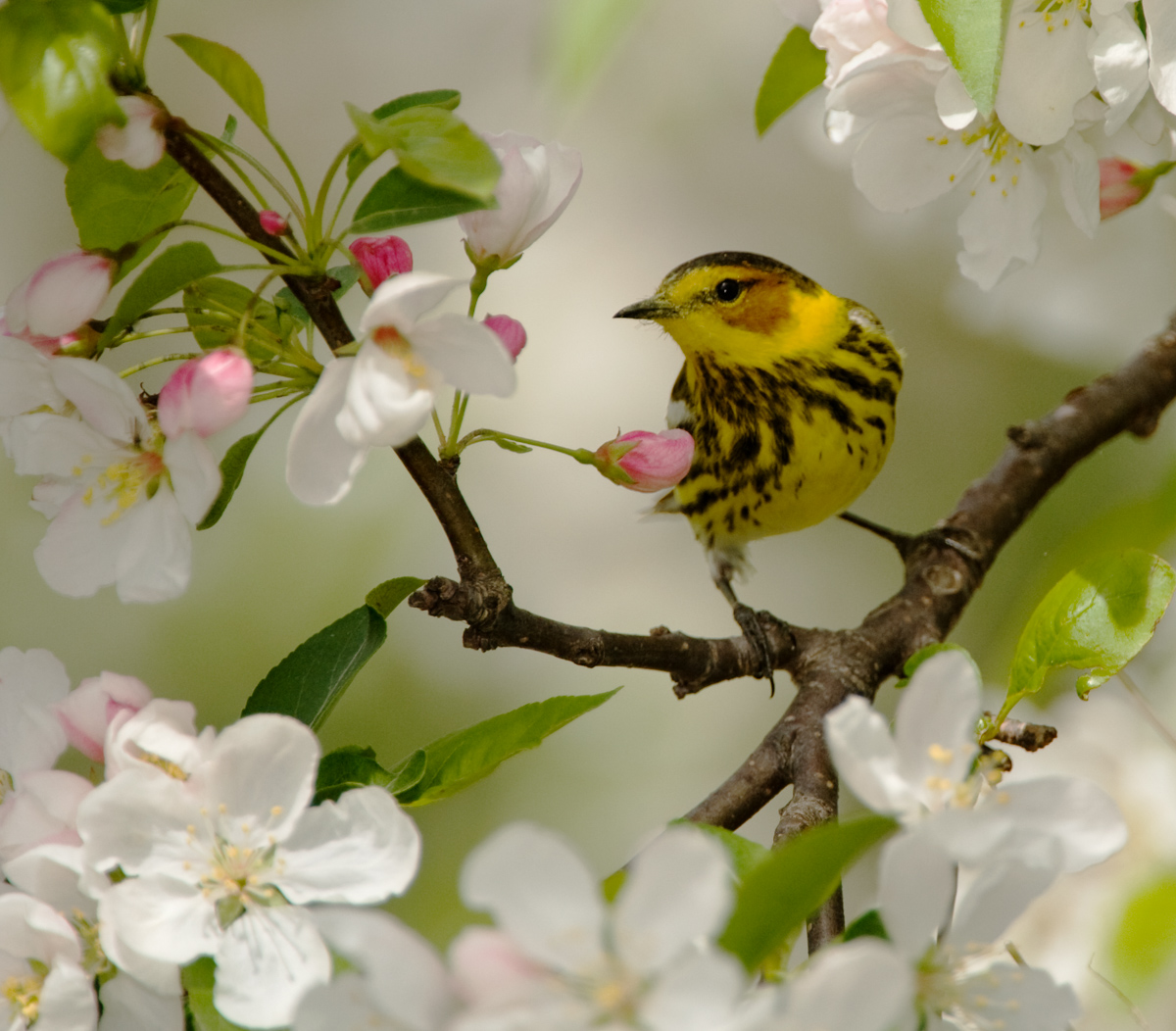
Migration is one of the most highly anticipated events in a birder’s calendar, and it’s so good, they named it twice. Spring migration is often considered more spectacular than the fall migration, and over the coming weeks, billions of birds return to their breeding grounds across the US.
Every year between February and May birds preparing for the breeding season are getting their plumage on – vibrant kaleidoscopes of colors await eager birders as hundreds of species return for their courtship rituals and further the family line. As the breeding season is a highly pressured activity, the influx of spring migrants occurs in a more condensed timeframe, as territory and a mate need to be found quickly.

Whilst migratory birds can and do show up just about anywhere as they travel hundreds, sometimes thousands of miles across land and water, there are some excellent well-known spots where you are guaranteed to catch sight of more than just a few birds. There are far too many species appearing in most of the lower 48 to list here but take just a glimpse into what you can expect.

THE GREAT LAKES
The Great Lakes region on the Canadian-American border provides a perfect opportunity to see flight-weary birds taking a rest before continuing over the waters and further north to Alaska and Canada’s Boreal Forests. Magee Marsh on the US side of Lake Erie is known for its American warblers like the Chestnut-sided and Golden-winged Warblers come mid-to-late May and Point Pelee on the Canadian side is a prime spot to see water birds such as arctic terns headed to Alaska.

A little further west, the Indiana Dunes National Park along the southern shore of Lake Michigan is the place to see Scarlet Tanagers with their striking red and black plumage. Scores of waterfowl stop here too, like the American woodcock. This complex habitat of oak savanna, wetlands, prairie and forest is inviting for almost any bird species migrating through the Midwest.

Further northwest into Minnesota around Lake Superior you should be able to see Cape May warblers in good numbers as spring progresses, joined by hundreds of other songbirds.
CENTRAL PARK, NYC
This urban park is an undisputed birders’ paradise, and what’s more, because of the proximity to so many humans, birds here are acclimated to our presence, making them easier to spot. Around 230 species including flycatchers, cuckoos, warblers, vireos, tanagers, grosbeaks as well as wading birds and other waterfowl can be spotted along the paths and by the lakes.
THE SOUTHERN STATES
Blackburnian warblers and painted buntings can be seen among the thousands of species entering the Sunshine State as the birds cross over from the neotropics along the Atlantic flyway. Eastern bluebirds, Florida scrub jays and Prothonotary warblers are a highlight of any birder’s list, and Texas will see huge numbers of purple martins, barn swallows and chimney swifts pass through.

PACIFIC NORTH AND WEST
Sandhill cranes reach peak abundance on the Great Plains as they head to their breeding grounds in Canada and Alaska and are considered one of the major draws of spring migration. These loudly vocal birds communicate to each other as they fly in flocks of the thousands through the spring skies. They are already on the move with numbers expected to peak in early April.

Western tanagers and black-headed grosbeaks can be seen in Washington state and all other states along the Pacific flyway. American goldfinches and robins also use this hugely popular route, also used by many species of those tiny jewels, the hummingbirds. Expect to see rufous, black-chinned and Anna’s hummingbird among the darting birds heading north.

Remember that whilst the final destination is often the best chance you’ll get to see returning migrants, there are many resting places known as stopovers on the way. Thousands of birds can be seen congregating for a few days in habitats like edges of large lakes, gulfs, bays, or oceans. Birds will rest wherever they know they can find shelter; some, after having crossed vast open spaces like the Great Plains will also seek out forests full of trees. Taking some time to research your patch can yield some unexpected and wonderful opportunities to see species you would normally never encounter; so get out your binoculars, good luck, and happy birding!


